Introduction to the paradox of the disappearance of information in a black hole
This article provides a quick introduction to the paradox of the disappearance of information in a black hole . For brevity, some details are omitted. In addition, it should be noted that the current understanding of the problem is so confusing that the most recent part of the article cannot be regarded as reliable or stable.
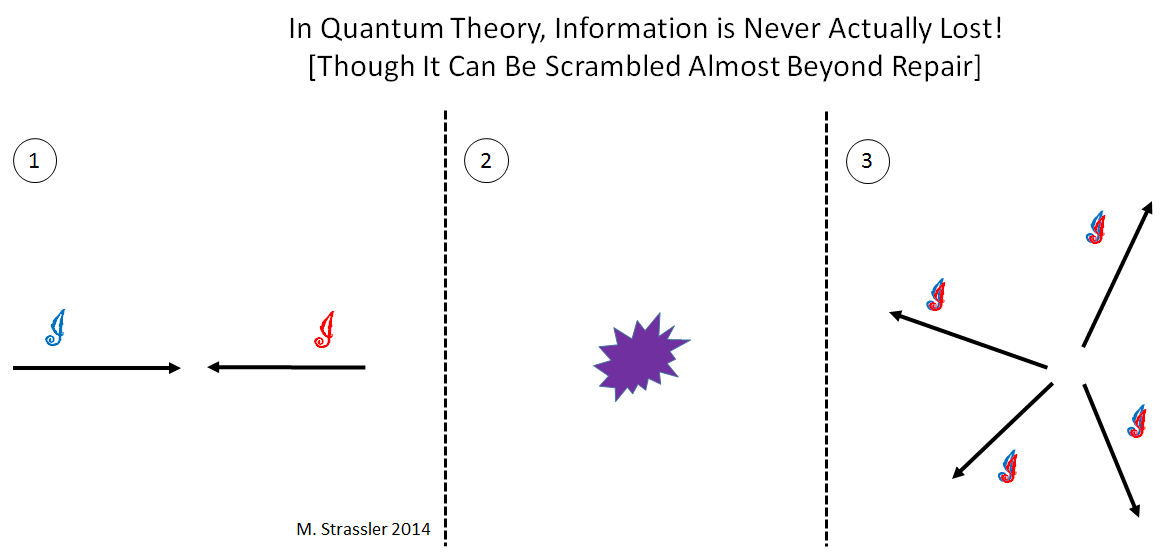
Fig. one
It is believed that the mathematics of quantum theory, sometimes called "quantum mechanics", governs all physical processes in nature. It can be used not to predict specific events, but only to obtain the probability that something will happen. But probabilities only make sense if you add up all the probabilities of all the various possible outcomes and get an amount equal to one. Quantum theory, in which it is not, does not make sense. One consequence of this is that in quantum theory, information is never really lost or copied; in principle, it is always possible to determine how the system began (its initial state), having complete information about what it ended with (final state). In fig. 1 shows the collision of two particles and the scattering from the place of collision of several particles carrying, in an encrypted form, information about the nature and properties of the two original particles.
The general theory of relativity is Einstein's theory of gravity, in which gravity can be viewed as the effect of the curvature of space and time. GRT is not a quantum theory. It accurately predicts what will happen, and does not give the probability of different outcomes.
')
From 1915 to 1958, an understanding gradually emerged that extremely compact and massive objects turned into black holes. Close to them, gravity becomes unusually strong — so much so that space-time is bent extremely, and any object that comes too close to them and has crossed the horizon of a black hole — the surface of no return — cannot escape. In fig. 2 shows the formation of the black hole horizon, at the moment when the two shells of matter become sufficiently compact. Information about these two shells moves inside the horizon and cannot go outside - in GR.

Fig. 2
Note that it is impossible to correctly draw black holes and information inside them. My illustrations are unable to demonstrate the curvature of space-time. For example, to fully understand you would need to take into account that the clocks inside the black hole go quite differently than the clocks outside the horizon, which, in turn, do not go as far as the remote clocks. Do not take my illustrations too seriously, showing the conceptual, but not the technical side of the question.
The horizon is not an object, but a place beyond which runaway becomes impossible. A well-known analogy is a boat approaching a waterfall along an accelerating stream. When the boat passes the curve of no return (Fig. 3), its motor becomes unable to fight the current, and it will inevitably fall. But the captain of the boat will not notice the moment of crossing the curve - this is just the usual part of the river, whose importance will become clear only when the captain tries to avoid a catastrophe. Similarly, crossing the horizon in GR, you will not notice anything; only when you try to avoid the black hole, you will find that - oh - you came too close.
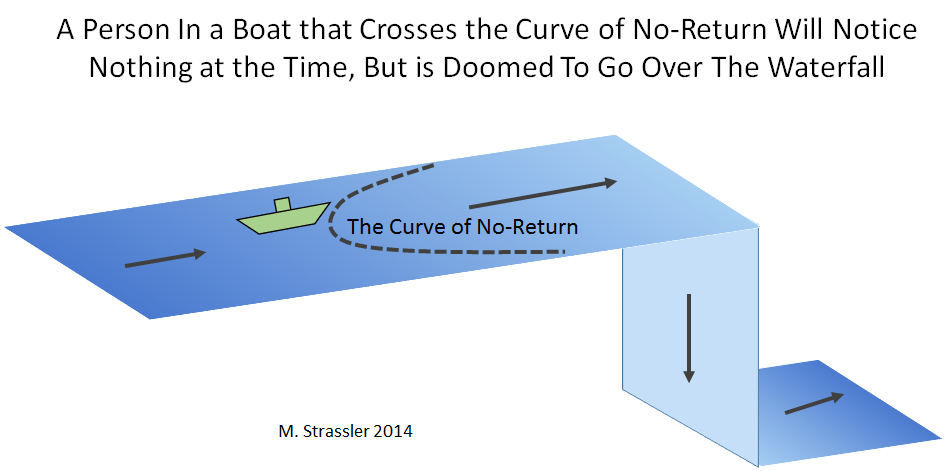
Fig. 3
The paradox arose after Hawking in 1974-1975 showed that a black hole surrounded by quantum fields would emit particles (Hawking radiation) and shrink (Fig. 4), causing it to evaporate. Compare with fig. 2, in which information about the two shells is stuck inside a black hole. In fig. 4 black hole disappears. Where did the information go? If it disappeared along with the black hole, it violates quantum theory.
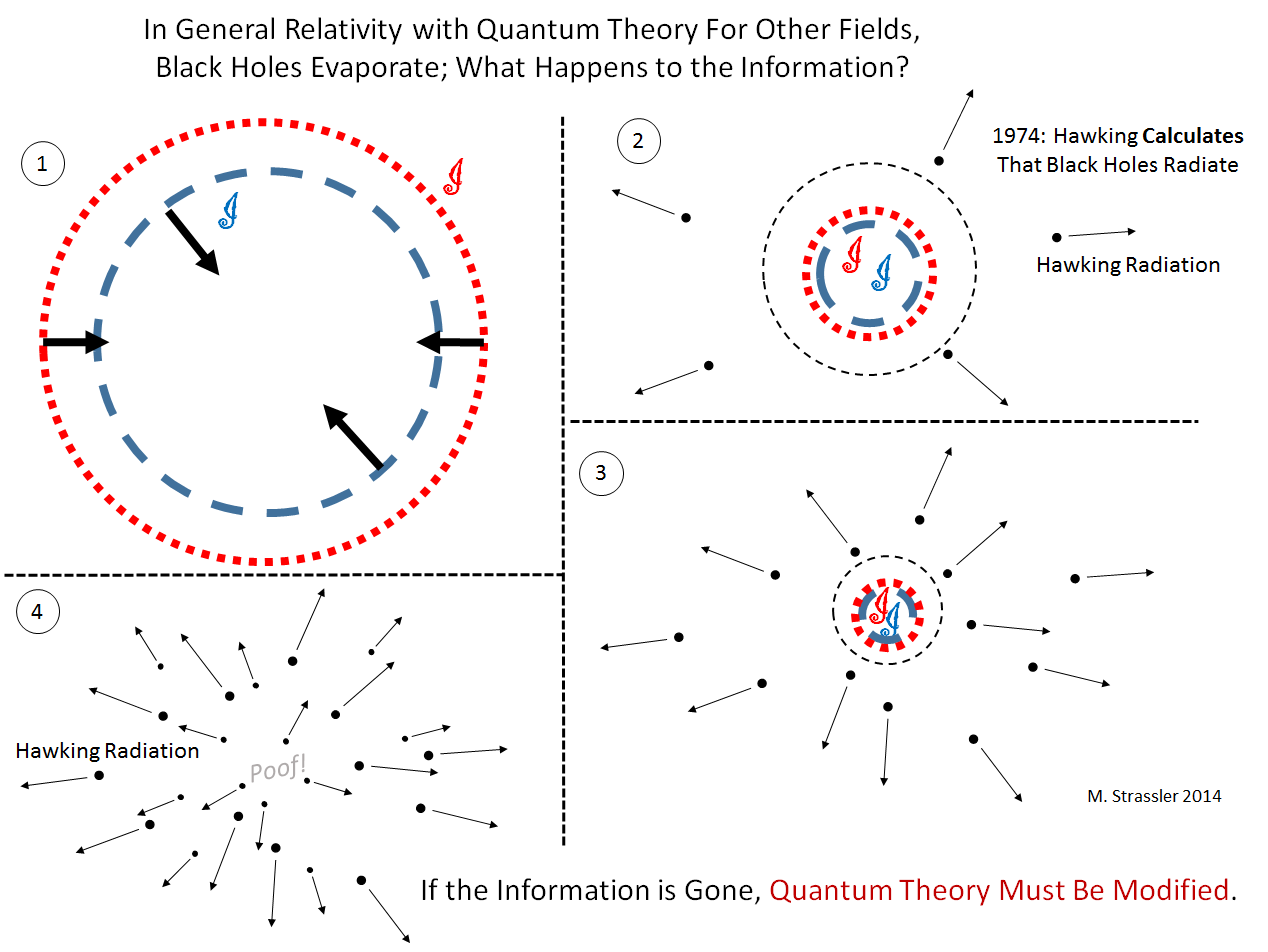
Fig. 4: 1) the shells of matter are compressed; 2) a horizon is formed, and Hawking radiation appears (in the form of particles without mass or low mass, for example, photons, neutrinos or gravitons); 3) Hawking radiation carries away energy, causing the size and mass of a black hole to shrink; 4) in the end, the black hole completely disappears, leaving only Hawking radiation. Simply put, the information that fell into a black hole disappears, violating the principles of quantum theory. Do I need to change the quantum theory?
Perhaps the information came back with Hawking radiation? The problem is that the information can not escape from the black hole. It cannot get into the radiation of Hocknig, except through copying what is left inside. But having two copies of information, one inside, and one outside, also violates quantum theory.

Fig. 5: If information is copied into Hawking radiation, it violates quantum theory.
Of course, the point may be that quantum theory is incomplete, and that black hole physics forces us to expand it, since Einstein expanded Newton's laws with his theory of relativity. Hawking believed in this for thirty years.
However, others believed that the need to change is not a quantum theory, but a general theory of relativity. In 1992, the “complementarity principle” was proposed, according to which information is in a sense both inside and outside, without violating quantum theory. The assumption was developed by Susskind and his young colleagues. Specifically, observers remaining outside the black hole see information accumulating on the horizon, and then fly away with Hawking radiation. Observers falling into a black hole see information inside (Fig. 6). Since these two classes of observers cannot communicate, a paradox does not arise.
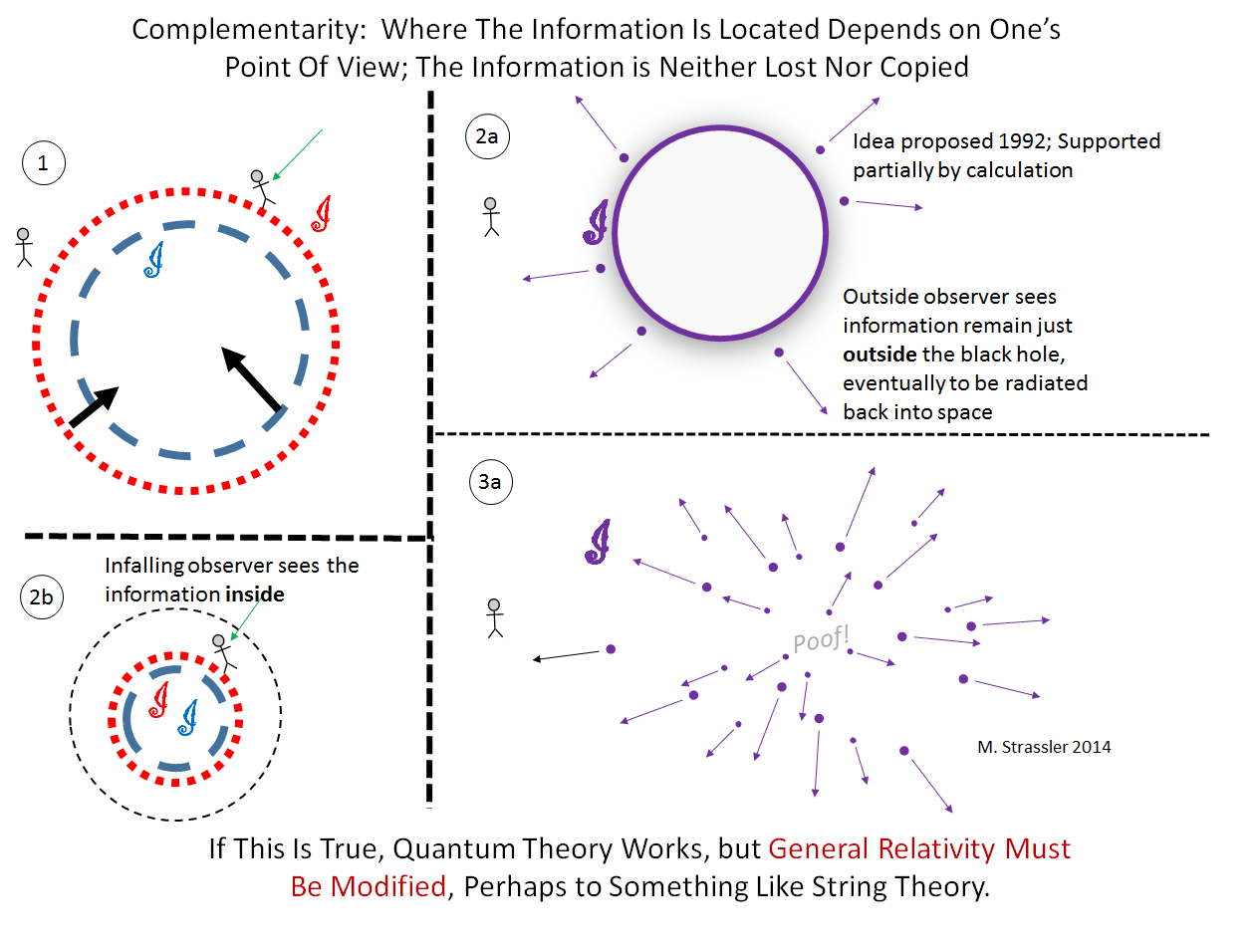
Fig. 6: The principle of complementarity says that everything depends on a point of view. The observer outside (2a) sees the information stored outside, and (3a) transmitted to Hawking radiation. An observer falling inside (2b) sees the information inside.
And yet, this assumption is potentially internally contradictory, and requires that a few strange things turn out to be true. Among them is what is called "holography", an idea developed by 't Hooft, and then Susskind. The idea is that the physics of the three-dimensional contents of the black hole, in which gravity obviously works, can be viewed, through a mysterious transformation, as physics, located directly above the two-dimensional horizon, where it is described by two-dimensional equations, in which gravity is not included at all!
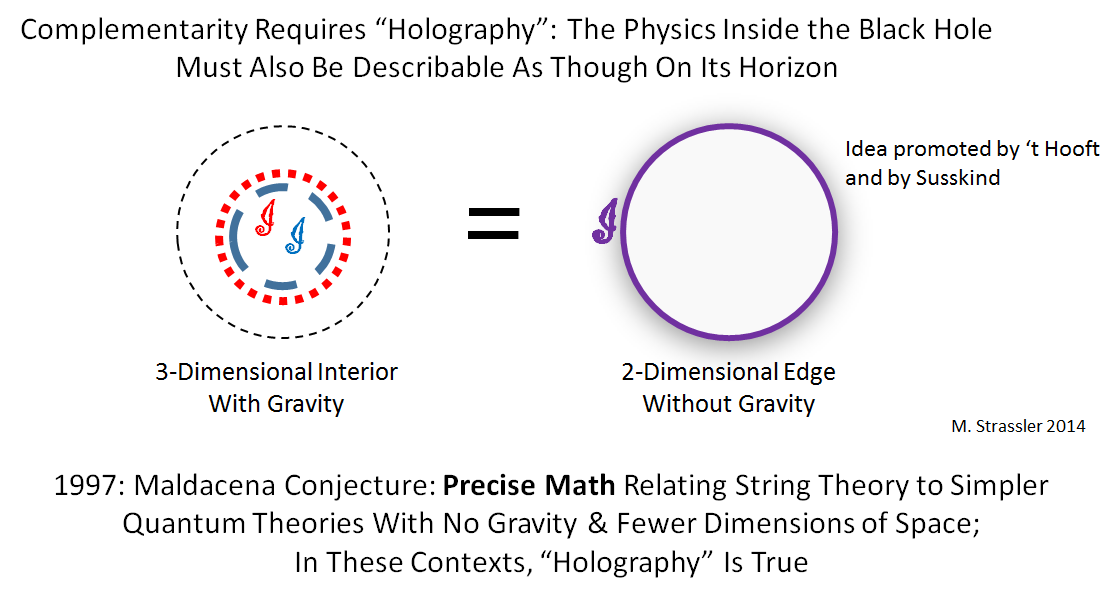
Fig. 7: It is interesting that it is possible to describe the insides of a black hole through its outer part, it was shown in the late 1990s and early 2000s. String theory, which contains a quantum version of GR, is in some cases capable of doing so.
Strangely enough, this theory received substantial confirmation in the late 1990s, at least for some situations. In 1997, Maldacena suggested (and hundreds of people tested this assumption in different ways) that, under certain conditions , string theory (quantum generalization of GR, candidate for the theory of the laws of nature of our Universe) is equivalent to quantum theory (specifically, quantum field theory ) without gravity and in less number of measurements. This relationship, known as AdS / CFT or “field / string matching,” deserves a separate article.
The success of holography increased faith in the truth of the principle of complementarity. Moreover, the field / string correspondence has made it quite convincing to show that small black holes can form and evaporate in string theory in a process that can be described by the corresponding quantum field theory (although not in detail) - and therefore this process, like any other process in quantum theory, occurs with the preservation of information! By 2005, even Hawking accepted this point of view - which, as the complementarity principle suggests, information is not lost in black holes, and that GTO needs to be changed, and not quantum theory.
However, in the principle of complementarity, there were inconsistencies. The evaporation of black holes goes so slowly that in quantum theory there are still no equations describing this process. In their search for these equations, Almheyri, Marolf, Polchinski, and Sally found that, when fulfilling reasonable assumptions, the complementarity principle contains an internal contradiction, manifested when the black hole evaporates by about half. The proof is rather tricky, it includes quantum entanglement, which Einstein called "creepy" and which is used in quantum computers. Roughly speaking, approximately to the middle of the process, so much information disappears from the black hole through Hawking radiation, that it is not enough to display the insides of a black hole on the horizon with the help of holography. Consequently, instead of the observer falling inward, he calmly passed through the harmless horizon, as in Fig. 6, the observer will not detect any entrails, and it is very hard - he will fry on firewall (wall of fire), hanging directly above the horizon (Fig. 8).
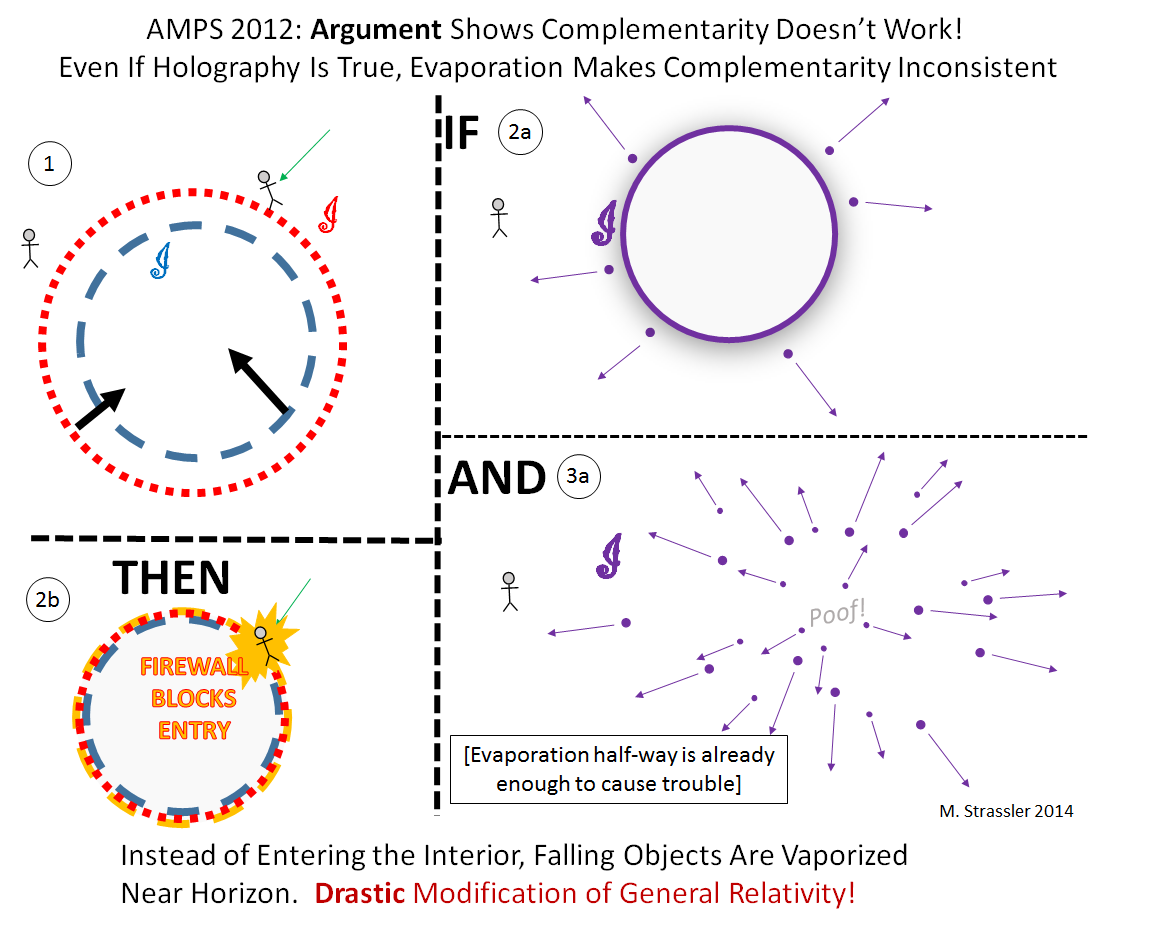
Fig. eight
The possibility of a firewall would require drastic changes to GR. In the case of truth, it would turn out that the description of black holes in GR, with a large internal volume, with a horizon that is simply a point of no return (as in Fig. 3), and not some special place where something happens, would turn out to be completely wrong after the black hole would have essentially evaporated.
So the paradox is back! And in even worse form. It turns out that if the quantum theory and the principle of complementarity are correct, GR need not be partially changed - it must be seriously redone! And there are no signs of such alteration in string theory, which offered an example of holography. But the field / string correspondence suggests that quantum theory can describe the formation and evaporation of black holes, so the information does not disappear. Is it possible to replace the principle of additionality with something? Or is one of the paradox arguments wrong?
All confused. There are many assumptions about solving this puzzle. Most of them do not reach you. The media tells you about Hawking because he is famous, but he is just one of so many voices discussing different ideas. All of these ideas suffer from one problem: a lack of equations to prove and explain the details of how they work. And since the lack of equations has led to the firewall paradox, one can hardly get out of this situation, relying on another assumption with an insufficient number of equations!
But, although Hawking is just one of many proposers, and although his assumption lacks equations, and it is likely to be incomplete, and possibly wrong, you probably want to know what he suggested. It is rather difficult to understand this without equations, but here is how I can explain it (Fig. 9). Hawking notes that although the outer part of black holes is simplified quickly, their insides can be very complex. Complex systems, such as weather, exhibit chaos properties, which can make them unpredictable even before using quantum theory. He assumes that this complexity destabilizes the horizon and allows information encrypted inside the black hole to leak out. Since this would violate Hawking’s theorems concerning GR, I assume that this means that GR must be changed. And since his assumption is based on AdS / CFT (field / string compliance), I assume that he believes that this should happen in string theory. And since what has fallen into a black hole still comes out of it, these holes are not really black - so call them “gray holes”, or “metastable bound gravitational states”, or “at first glance black holes” "- but" black ", perhaps, is not quite the correct term.
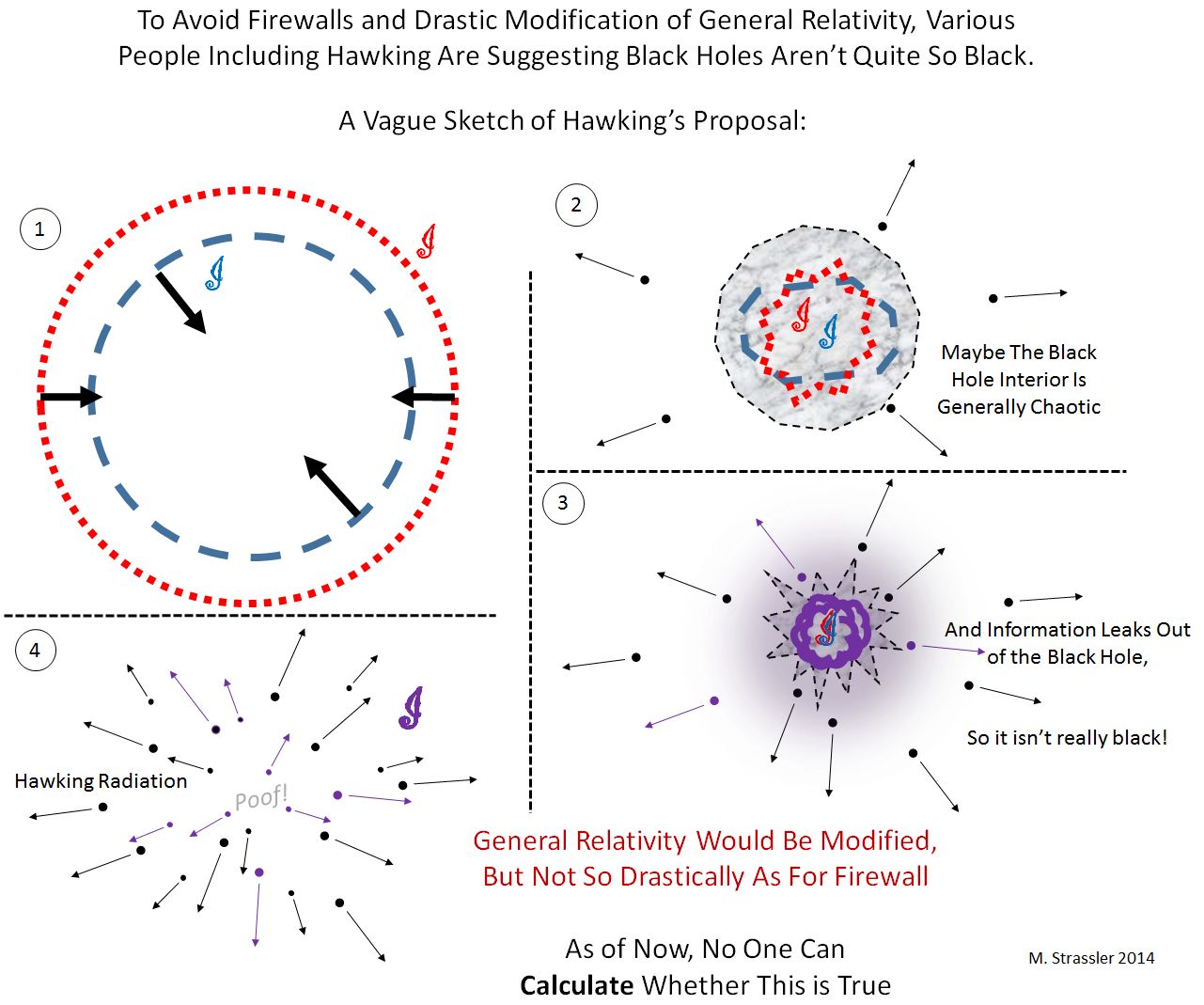
Fig. 9: I apologize to Hawking, because neither I nor any of my surroundings know exactly what he means. So I had to make a rough sketch of what I think he is trying to offer.
But with this proposal there are many obvious problems, not the least of which is that the mystery of the firewall is already manifested in the half-evaporated black hole, and not at the end of its life. Therefore, the black hole is still quite large when the information is already beginning to leak - and it is very difficult to reconcile with the proposal of Hawking. So do not wait for a consensus to emerge on Hawking's proposal, especially without any specific equations to solve.
In any case, everything that you learned about black holes is, so far, essentially true. Astrophysicists do not need to worry about changes in what they think they know about stellar or galactic black holes. At least for large and not very old black holes, Hawking's proposal will not lead to some measurable changes. And if you fall into the hole, you still can not get out, or send a message to someone outside. So, even if it turns out that strict black holes do not exist, in the center of almost every galaxy of the Universe there will still be a “sufficiently black” hole.
Do not expect this 40-year-old puzzle to be solved soon. Her decision, most likely, will be offered by some young physicist, about whom you know nothing, or even an unborn person.

Fig. one
Two conflicting theories
It is believed that the mathematics of quantum theory, sometimes called "quantum mechanics", governs all physical processes in nature. It can be used not to predict specific events, but only to obtain the probability that something will happen. But probabilities only make sense if you add up all the probabilities of all the various possible outcomes and get an amount equal to one. Quantum theory, in which it is not, does not make sense. One consequence of this is that in quantum theory, information is never really lost or copied; in principle, it is always possible to determine how the system began (its initial state), having complete information about what it ended with (final state). In fig. 1 shows the collision of two particles and the scattering from the place of collision of several particles carrying, in an encrypted form, information about the nature and properties of the two original particles.
The general theory of relativity is Einstein's theory of gravity, in which gravity can be viewed as the effect of the curvature of space and time. GRT is not a quantum theory. It accurately predicts what will happen, and does not give the probability of different outcomes.
')
From 1915 to 1958, an understanding gradually emerged that extremely compact and massive objects turned into black holes. Close to them, gravity becomes unusually strong — so much so that space-time is bent extremely, and any object that comes too close to them and has crossed the horizon of a black hole — the surface of no return — cannot escape. In fig. 2 shows the formation of the black hole horizon, at the moment when the two shells of matter become sufficiently compact. Information about these two shells moves inside the horizon and cannot go outside - in GR.

Fig. 2
Note that it is impossible to correctly draw black holes and information inside them. My illustrations are unable to demonstrate the curvature of space-time. For example, to fully understand you would need to take into account that the clocks inside the black hole go quite differently than the clocks outside the horizon, which, in turn, do not go as far as the remote clocks. Do not take my illustrations too seriously, showing the conceptual, but not the technical side of the question.
The horizon is not an object, but a place beyond which runaway becomes impossible. A well-known analogy is a boat approaching a waterfall along an accelerating stream. When the boat passes the curve of no return (Fig. 3), its motor becomes unable to fight the current, and it will inevitably fall. But the captain of the boat will not notice the moment of crossing the curve - this is just the usual part of the river, whose importance will become clear only when the captain tries to avoid a catastrophe. Similarly, crossing the horizon in GR, you will not notice anything; only when you try to avoid the black hole, you will find that - oh - you came too close.

Fig. 3
The paradox of the disappearance of information in a black hole
The paradox arose after Hawking in 1974-1975 showed that a black hole surrounded by quantum fields would emit particles (Hawking radiation) and shrink (Fig. 4), causing it to evaporate. Compare with fig. 2, in which information about the two shells is stuck inside a black hole. In fig. 4 black hole disappears. Where did the information go? If it disappeared along with the black hole, it violates quantum theory.

Fig. 4: 1) the shells of matter are compressed; 2) a horizon is formed, and Hawking radiation appears (in the form of particles without mass or low mass, for example, photons, neutrinos or gravitons); 3) Hawking radiation carries away energy, causing the size and mass of a black hole to shrink; 4) in the end, the black hole completely disappears, leaving only Hawking radiation. Simply put, the information that fell into a black hole disappears, violating the principles of quantum theory. Do I need to change the quantum theory?
Perhaps the information came back with Hawking radiation? The problem is that the information can not escape from the black hole. It cannot get into the radiation of Hocknig, except through copying what is left inside. But having two copies of information, one inside, and one outside, also violates quantum theory.

Fig. 5: If information is copied into Hawking radiation, it violates quantum theory.
Of course, the point may be that quantum theory is incomplete, and that black hole physics forces us to expand it, since Einstein expanded Newton's laws with his theory of relativity. Hawking believed in this for thirty years.
The complementarity principle: saving quantum theory
However, others believed that the need to change is not a quantum theory, but a general theory of relativity. In 1992, the “complementarity principle” was proposed, according to which information is in a sense both inside and outside, without violating quantum theory. The assumption was developed by Susskind and his young colleagues. Specifically, observers remaining outside the black hole see information accumulating on the horizon, and then fly away with Hawking radiation. Observers falling into a black hole see information inside (Fig. 6). Since these two classes of observers cannot communicate, a paradox does not arise.

Fig. 6: The principle of complementarity says that everything depends on a point of view. The observer outside (2a) sees the information stored outside, and (3a) transmitted to Hawking radiation. An observer falling inside (2b) sees the information inside.
And yet, this assumption is potentially internally contradictory, and requires that a few strange things turn out to be true. Among them is what is called "holography", an idea developed by 't Hooft, and then Susskind. The idea is that the physics of the three-dimensional contents of the black hole, in which gravity obviously works, can be viewed, through a mysterious transformation, as physics, located directly above the two-dimensional horizon, where it is described by two-dimensional equations, in which gravity is not included at all!

Fig. 7: It is interesting that it is possible to describe the insides of a black hole through its outer part, it was shown in the late 1990s and early 2000s. String theory, which contains a quantum version of GR, is in some cases capable of doing so.
Strangely enough, this theory received substantial confirmation in the late 1990s, at least for some situations. In 1997, Maldacena suggested (and hundreds of people tested this assumption in different ways) that, under certain conditions , string theory (quantum generalization of GR, candidate for the theory of the laws of nature of our Universe) is equivalent to quantum theory (specifically, quantum field theory ) without gravity and in less number of measurements. This relationship, known as AdS / CFT or “field / string matching,” deserves a separate article.
The success of holography increased faith in the truth of the principle of complementarity. Moreover, the field / string correspondence has made it quite convincing to show that small black holes can form and evaporate in string theory in a process that can be described by the corresponding quantum field theory (although not in detail) - and therefore this process, like any other process in quantum theory, occurs with the preservation of information! By 2005, even Hawking accepted this point of view - which, as the complementarity principle suggests, information is not lost in black holes, and that GTO needs to be changed, and not quantum theory.
Firewall and current mess
However, in the principle of complementarity, there were inconsistencies. The evaporation of black holes goes so slowly that in quantum theory there are still no equations describing this process. In their search for these equations, Almheyri, Marolf, Polchinski, and Sally found that, when fulfilling reasonable assumptions, the complementarity principle contains an internal contradiction, manifested when the black hole evaporates by about half. The proof is rather tricky, it includes quantum entanglement, which Einstein called "creepy" and which is used in quantum computers. Roughly speaking, approximately to the middle of the process, so much information disappears from the black hole through Hawking radiation, that it is not enough to display the insides of a black hole on the horizon with the help of holography. Consequently, instead of the observer falling inward, he calmly passed through the harmless horizon, as in Fig. 6, the observer will not detect any entrails, and it is very hard - he will fry on firewall (wall of fire), hanging directly above the horizon (Fig. 8).

Fig. eight
The possibility of a firewall would require drastic changes to GR. In the case of truth, it would turn out that the description of black holes in GR, with a large internal volume, with a horizon that is simply a point of no return (as in Fig. 3), and not some special place where something happens, would turn out to be completely wrong after the black hole would have essentially evaporated.
So the paradox is back! And in even worse form. It turns out that if the quantum theory and the principle of complementarity are correct, GR need not be partially changed - it must be seriously redone! And there are no signs of such alteration in string theory, which offered an example of holography. But the field / string correspondence suggests that quantum theory can describe the formation and evaporation of black holes, so the information does not disappear. Is it possible to replace the principle of additionality with something? Or is one of the paradox arguments wrong?
All confused. There are many assumptions about solving this puzzle. Most of them do not reach you. The media tells you about Hawking because he is famous, but he is just one of so many voices discussing different ideas. All of these ideas suffer from one problem: a lack of equations to prove and explain the details of how they work. And since the lack of equations has led to the firewall paradox, one can hardly get out of this situation, relying on another assumption with an insufficient number of equations!
But, although Hawking is just one of many proposers, and although his assumption lacks equations, and it is likely to be incomplete, and possibly wrong, you probably want to know what he suggested. It is rather difficult to understand this without equations, but here is how I can explain it (Fig. 9). Hawking notes that although the outer part of black holes is simplified quickly, their insides can be very complex. Complex systems, such as weather, exhibit chaos properties, which can make them unpredictable even before using quantum theory. He assumes that this complexity destabilizes the horizon and allows information encrypted inside the black hole to leak out. Since this would violate Hawking’s theorems concerning GR, I assume that this means that GR must be changed. And since his assumption is based on AdS / CFT (field / string compliance), I assume that he believes that this should happen in string theory. And since what has fallen into a black hole still comes out of it, these holes are not really black - so call them “gray holes”, or “metastable bound gravitational states”, or “at first glance black holes” "- but" black ", perhaps, is not quite the correct term.

Fig. 9: I apologize to Hawking, because neither I nor any of my surroundings know exactly what he means. So I had to make a rough sketch of what I think he is trying to offer.
But with this proposal there are many obvious problems, not the least of which is that the mystery of the firewall is already manifested in the half-evaporated black hole, and not at the end of its life. Therefore, the black hole is still quite large when the information is already beginning to leak - and it is very difficult to reconcile with the proposal of Hawking. So do not wait for a consensus to emerge on Hawking's proposal, especially without any specific equations to solve.
In any case, everything that you learned about black holes is, so far, essentially true. Astrophysicists do not need to worry about changes in what they think they know about stellar or galactic black holes. At least for large and not very old black holes, Hawking's proposal will not lead to some measurable changes. And if you fall into the hole, you still can not get out, or send a message to someone outside. So, even if it turns out that strict black holes do not exist, in the center of almost every galaxy of the Universe there will still be a “sufficiently black” hole.
Do not expect this 40-year-old puzzle to be solved soon. Her decision, most likely, will be offered by some young physicist, about whom you know nothing, or even an unborn person.
Source: https://habr.com/ru/post/402077/
All Articles